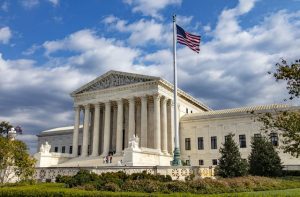The significant changes to social networking platform Facebook’s profile options regarding a Timeline and Open Graph API technology, allows nonprofits the ability to secure a more permanent spot in a supporter’s online identity.
Understanding these changes completely, especially through the Causes interface, can prepare organizations for cultivating donors along with eventually receiving donations via the social media tool.
“For the first time in a long time (the Timeline) allows Causes people (to have nonprofits as) a key part of their online representation because of the permanent nature of the Timeline,” said Matt Mahan, nonprofit and business development director of Causes, based in San Francisco, Calif. “The key here is the distribution of awareness and your personal identity. It’s an opportunity for nonprofits to be distributed more widely, it makes them easier to have a social identity.”
Mahan said these changes came in response to the diminished importance of the Facebook profile. “The new additions is an upgrade as the profile has become a scrapbook from points in your life,” said Mahan. “Part of that is people have stopped caring about their profile because that’s not where new stuff is posted. I think in general nonprofits not be on top of social media. They often do not understand the full benefits of addition. Facebook is truly revolutionizing the way people receive and get information.”
While in the past the Facebook profile was a simple regurgitation of a user’s interests, hobbies, photographs and personal information, the new profile condenses this information from the user’s entire history into “reports.” These reports add up quickly, giving outside users a complete “timeline” of the user’s social experience on Facebook.
Previously, a user they would have to constantly update their status with calls to action or a link showing people where to donate. Now, a link can be permanent, ever increasing the connection between a supporter and an organization.
“We want people to have a real sense of meaning,” said Mahan. “What this means is that Causes will be able to prominently featured. The kind of things you do through causes, such as volunteering, is pretty representative of your personality.”
Mahan said it is intended for this to go beyond the one-off “eyeballs” or CPM (cost per thousand) views models to indentify timeline construction. Instead, the new Timeline will be more of an authentic online identity, because a user chooses what they want to share for any amount of time they want.
“Frequency and recency don’t necessarily correlate with quality or ‘coreness’ with respect to [their] personal identity,” wrote Causes founder Joe Green in a recent blog post discussing the channel. From a nonprofit perspective this means more awareness for a particular program or mission goal. Users are able to publicly support nonprofits on their profile by sharing their favorite nonprofit videos, projects and other content.
The value of Open Graph is that “it allows for the passive publishing of actions people are taking online in real time — including joining causes, watching nonprofit videos, making donations and otherwise engaging in nonprofit campaigns,” said Mahan.
After accepting permission from Facebook, the simple act of clicking on a news story, podcast or video on an organization’s website results in an activity posted on your Facebook profile. When supporters view videos in real-time, their friends will see this activity in real-time and also have the opportunity to view the video.
Mahan admitted that the complete integration of an organization with Open Graph would be “expensive,” but there was no market rate at this point. For an organization to integrate its profile with Open Graph API, it would have to hire one or two full-time developers for about a month. After that, organizations would need to keep them on as part-time, anticipating any future changes.
Organizations are also paying for the ability to allow these actions to be rolled up into meaningful reports on what people previously accomplished on Causes.
“Open graph helps nonprofits have better reach,” said Mahan. “It makes it easier to share content and publish more of what you were doing. It helps organizations reach more people and makes it possible to share.”
Even though these are the intentions of the Facebook changes, Holly Ross, executive director at NTEN in Portland, Ore., believes the sector won’t see full use of these tools for some time. “A lot of these things start with what they intend, but turn into things that can be actually done,” said Ross.
“I think these additions are good because nonprofits are going to rethink how they move and target supporters,” Ross said. “In the past, you always wanted people to comment, but you could have a page without that conversation. With the stream, you have to work on delivering much more targeted content and focusing on personal conversations.”
“The new additions is an upgrade as the profile has become a scrapbook from points in your life,” said Mahan. “Part of that is people have stopped caring about their profile because that’s not where new stuff is posted. NPT










